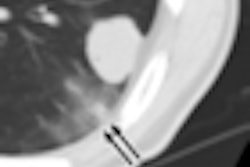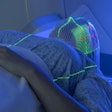Women who receive radiation therapy (RT) for breast cancer have a higher risk of developing secondary soft-tissue sarcomas than those who do not, according to a new outcomes study of more than half a million breast cancer survivors.
The rarity of soft-tissue sarcoma -- and the fact that it develops over a time span of one to 29 years following treatment -- makes it difficult to accurately quantify the risk to patients. Researchers from Brigham and Women's Hospital in Boston tried to determine this risk by querying the Surveillance, Epidemiology, and End Results (SEER) database. Their findings were reported in a study published in the September 15 issue of Cancer (2009, Vol. 15:115[8], pp. 4055-4063).
Researchers queried the SEER database to identify women treated for breast cancer between 1973 and 2003. The SEER database is a national, multi-institutional, community-based registry covering approximately 26% of the population in the U.S.
Patients were excluded from the study if they had a history of prior malignancies, had records that were inconclusive about whether radiation therapy had been performed, or were diagnosed with soft-tissue sarcomas in less than 12 months following treatment.
A total of 563,155 breast cancer patients qualified, 37% of whom received radiation therapy treatments. Within the total group, 948 patients (0.0017%) developed soft-tissue sarcomas within a median latent period of seven years after breast cancer diagnosis. Half of these patients developed angiosarcomas of the thorax and upper extremities. Median five-year survival was 38%.
The study determined that the incidence of women who received radiation therapy and will develop soft-tissue sarcoma is 31 cases in 100,000 person-years. By comparison, the incidence for patients who did not have radiation therapy is 22 cases in 100,000 person-years, or 29% fewer cases.
Radiation therapy increased the risk of developing all types of soft-tissue sarcomas by 1.5 fold and of angiosarcomas, specifically, by 9.0 fold, according to principal investigator Dr. Chandrajit Raut, an oncology surgeon. The researchers also discovered that patients who underwent partial mastectomies had a 7.0-fold higher risk of developing secondary angiosarcomas compared to patients who had mastectomies. Patients who had lymph node dissections had a 2.6-fold higher risk.
The risk of developing secondary soft-tissue sarcomas increases three years after diagnosis, peaks at approximately 10 years, and remains elevated up to 20 years.
Related Reading
Women treated for DCIS are not obtaining regular surveillance mammograms, May 26, 2009
Copyright © 2009 AuntMinnie.com



















